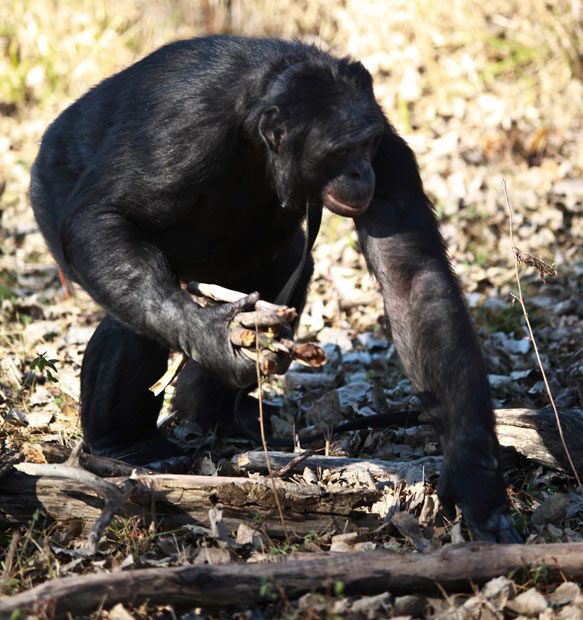
For instance, a male chimpanzee might try to demonstrate his competence to other maleĦ0 chimpanzees by killing prey. Researchers suggest that chimpanzees might hunt for social gain. Although it is clear that the hunting habits of chimpanzees areĥ5 guided mostly by nutritional needs, some aspects of the chimpanzees’ behavior are not well explained by nutrition alone.

Most people assume that food choices are based solely on nutritional costs and benefits. In fact, most ancient humans ate a diet composed mostly of plants, and evenĥ0 modern humans are considered omnivores because they eat fruits, vegetables, and meat. However, like chimpanzees, humans are not truly carnivorous creatures. The chimpanzees’ eating habits also closely resemble those of the early human hunter-gatherers.Ĥ5 Humans and chimpanzees are the only members of the Great Ape family that hunt and eat meat on a regular basis. This is comparable to the quantity of meat eaten by modern human societies whose members forage when other food sources are scarce. During the height of the dry season, the estimated meat intake is about 65 grams of meat per dayĤ0 for adult chimpanzees. Consequently, chimpanzees supplement their diets with meat. During the dry season, food shortages in the forest cause the chimpanzees’ body weight to drop. August and September appear to be the most popularģ5 months for hunting. Studies show that chimpanzees do most of their hunting in the dry season. This is substantially less than the quantity of meat consumed by the average human. In fact,ģ0 meat composes only about 3 percent of the chimpanzee diet. Despite these findings, scientists still maintain that chimpanzees are mostly fruit-eating creatures. In oneĢ5 notable study, the red colobus monkey accounted for more than 80 percent of the animals eaten by one group of chimpanzees. The red colobus monkey is one of the most important animals in the chimpanzees’ diet. Among the chimpanzees’ favorite prey are the red colobus monkey, feral pig, and various small antelope species. Individual chimpanzees have beenĢ0 known to hunt and eat more than 150 small animals each year. In fact, Goodall discovered that chimpanzees are actually very proficient hunters. It was Goodall who first reported that meat was a natural part of the chimpanzee diet. Before the 1960s,ġ5 scientists believed that chimpanzees were strict vegetarians. Jane Goodall began studying chimpanzees in Tanzania. If this is true, humans are more closely related to chimpanzees than to any other animal species.

Experts believe that chimpanzees share about 98.5 percent ofġ0 our DNA sequence. Modern humans and chimpanzees are actually very closely related. It is not difficult to determine why studying chimpanzees might be beneficial. Line 5 find clues about our own prehistoric past. To solve this problem, scientists have started examining chimpanzees’ hunting behavior and diet to Scientists know very little about the eating habits of our ancestors who lived over two and a half million years ago.
/high-angle-view-of-chimpanzee-in-forest-769784687-5b1e76d63de4230037ce6f9d.jpg)
Bonobos at Wamba did not like bananas or papayas, which were offered to them in food trials.NATURAL SCIENCE: The Eating Habits of Related Primates.Frequently associated with genito-genital contact in various age-sex class combinations. Not often seen drinking from standing water - may satisfy fluid needs primarily with fruit juices.Total feeding time (arboreal and terrestrial does not exceed 30% (Wamba)).At Lukuru large groups of 18-25 bonobos gather regularly at permanent pools for feeding on aquatic vegetation.Average size of foraging parties for bonobos at Lukuru: 6.4 individuals at Lomako, about 5 individuals.Field studies now look for parallels (and differences) between chimpanzee foraging strategies and those of bonobos when the two species ecological settings are similar.Bonobo foraging strategies as seen at Lukuru were more variable than previously reported due to fact that they occupy these drier and more open habitats in addition to wet forests habitats studied previously.Discovery of preferred fruits prompts bonobos to "fall into a state of excitement" where they eat voraciously, chase, beg, greet, appease, make feeding grunts, whoop loudly and copulate often.Several researchers note a correlation between a habitat with abundant fruits and the party size of the bonobos.

Bonobos find most of their food in the trees at a height of 25 to 40 m (82 to 131 ft) (Kano 1992).


 0 kommentar(er)
0 kommentar(er)
